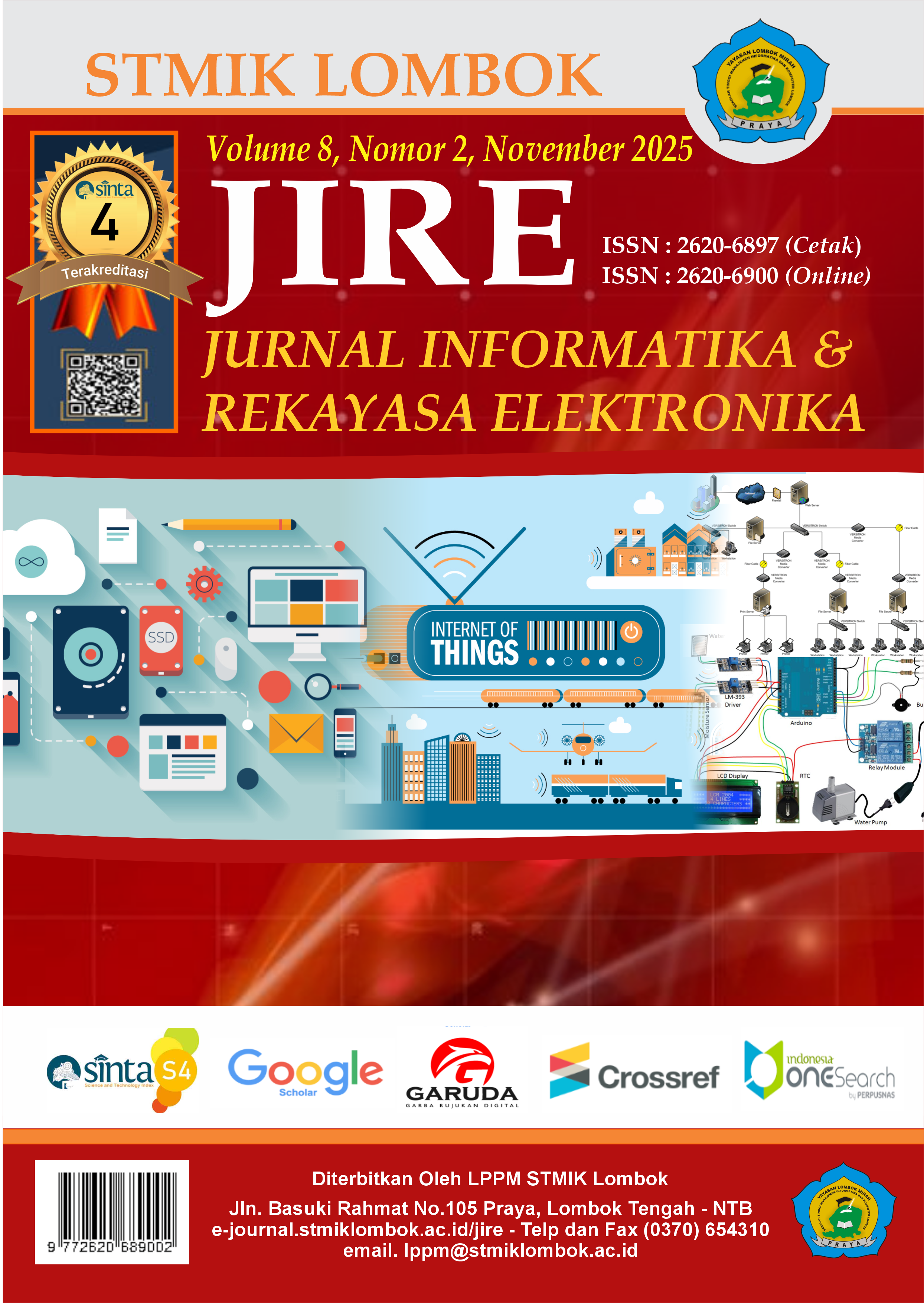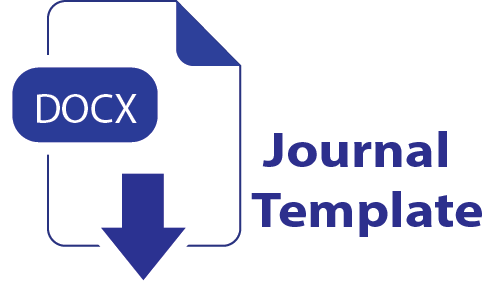INTEGRASI LITERASI DIGITAL KE DALAM TECHNOLOGY ACCEPTANCE MODEL UNTUK MEMPREDIKSI KEPUASAN DAN NIAT KEBERLANJUTAN PENGGUNA WEBSITE LAYANAN PUBLIK: STUDI KASUS DISDUKCAPIL LOMBOK TENGAH
DOI:
https://doi.org/10.36595/jire.v8i2.1766Keywords:
Technology Acceptance Model, literasi digital, adopsi teknologi, layanan publik digital, PLS-SEMAbstract
This study aims to analyze the factors influencing the intention to use digital public services based on the Technology Acceptance Model (TAM) with the addition of digital literacy as an extended variable. Data were collected between May and August 2025 from 101 valid respondents who used services at the Department of Population and Civil Registration. The analysis employed Partial Least Squares Structural Equation Modeling (PLS-SEM). The findings reveal that Perceived Usefulness (PU) significantly affects Attitude Toward Using (ATU) and Behavioral Intention to Use (BI), while Perceived Ease of Use (PEOU) strongly influences PU. Digital literacy demonstrates a significant direct effect on BI but does not serve as a moderating variable in the core TAM relationships. The coefficient of determination (R²) indicates a moderate to high explanatory power, and the Q² values confirm the predictive relevance of the model. These results suggest that improving the adoption of digital public services requires optimizing system usefulness, simplifying the interface, enhancing users’ digital skills, and effectively communicating service value. This research extends the technology acceptance literature in the public sector while providing practical guidance for system developers and policymakers.
Penelitian ini bertujuan untuk menganalisis faktor-faktor yang memengaruhi niat penggunaan layanan publik digital berbasis Technology Acceptance Model (TAM) dengan menambahkan variabel literasi digital. Pengumpulan data dilakukan pada Mei–Agustus 2025 dengan responden valid sebanyak 101 orang pengguna layanan Dinas Kependudukan dan Pencatatan Sipil. Analisis menggunakan Partial Least Squares Structural Equation Modeling (PLS-SEM). Hasil penelitian menunjukkan bahwa Perceived Usefulness (PU) berpengaruh signifikan terhadap Attitude Toward Using (ATU) dan Behavioral Intention to Use (BI), sedangkan Perceived Ease of Use (PEOU) berpengaruh kuat terhadap PU. Literasi digital terbukti memiliki pengaruh langsung yang signifikan terhadap BI, namun tidak berperan sebagai variabel moderasi pada hubungan inti TAM. Nilai koefisien determinasi (R²) menunjukkan daya jelaskan model pada tingkat moderat hingga tinggi, sedangkan nilai Q² mengonfirmasi relevansi prediktif model. Temuan ini mengindikasikan bahwa peningkatan adopsi layanan publik digital memerlukan optimalisasi kegunaan sistem, penyederhanaan antarmuka, peningkatan keterampilan digital pengguna, serta komunikasi nilai layanan yang jelas. Penelitian ini memperluas literatur penerimaan teknologi di sektor publik sekaligus memberikan panduan praktis bagi pengembang sistem dan pembuat kebijakan.
Downloads
References
K. H. Kabir et al., “Application of the technology acceptance model to assess the use and preferences of ICTs among field-level extension officers in Bangladesh,” Digital Geography and Society, vol. 3, p. 100027, 2022, doi: https://doi.org/10.1016/j.diggeo.2022.100027.
C. Wang et al., “An empirical evaluation of technology acceptance model for Artificial Intelligence in E-commerce,” Heliyon, vol. 9, no. 8, Aug. 2023, doi: 10.1016/j.heliyon.2023.e18349.
O. Jokonya, “Validating Technology Acceptance Model (TAM) during IT Adoption in Organizations,” in 2015 IEEE 7th International Conference on Cloud Computing Technology and Science (CloudCom), 2015, pp. 509–516. doi: 10.1109/CloudCom.2015.56.
K. Imtihan and M. R. Mardi, “The Impact of Visual Quality and User Interface Responsiveness on Student Satisfaction in Academic Information Systems (AIS),” Pakistan Journal of Life and Social Sciences (PJLSS), vol. 22, no. 2, 2024, doi: 10.57239/PJLSS-2024-22.2.001455.
A. Gunawan, A. F. Fatikasari, and S. A. Putri, “The Effect of Using Cashless (QRIS) on Daily Payment Transactions Using the Technology Acceptance Model,” Procedia Comput Sci, vol. 227, pp. 548–556, 2023, doi: https://doi.org/10.1016/j.procs.2023.10.557.
Z. J. A. Belmonte, Y. T. Prasetyo, M. M. L. Cahigas, R. Nadlifatin, and Ma. J. J. Gumasing, “Factors influencing the intention to use e-wallet among generation Z and millennials in the Philippines: An extended technology acceptance model (TAM) approach,” Acta Psychol (Amst), vol. 250, p. 104526, 2024, doi: https://doi.org/10.1016/j.actpsy.2024.104526.
W. Yang and Y. Liu, “Research on Purchase Intention of Fresh Agricultural Products Based on TAM Model in Pre-sale Mode,” in 2021 2nd International Conference on E-Commerce and Internet Technology (ECIT), 2021, pp. 302–309. doi: 10.1109/ECIT52743.2021.00071.
N. A. Hidayah, N. Hasanati, R. N. Putri, K. F. Musa, Z. Nihayah, and A. Muin, “Analysis Using the Technology Acceptance Model (TAM) and DeLone & McLean Information System (D&M IS) Success Model of AIS Mobile User Acceptance,” in 2020 8th International Conference on Cyber and IT Service Management (CITSM), 2020, pp. 1–4. doi: 10.1109/CITSM50537.2020.9268859.
S. R. Natasia, Y. T. Wiranti, and A. Parastika, “Acceptance analysis of NUADU as e-learning platform using the Technology Acceptance Model (TAM) approach,” Procedia Comput Sci, vol. 197, pp. 512–520, 2022, doi: https://doi.org/10.1016/j.procs.2021.12.168.
L. German Ruiz-Herrera, A. Valencia-Arias, A. Gallegos, M. Benjumea-Arias, and E. Flores-Siapo, “Technology acceptance factors of e-commerce among young people: An integration of the technology acceptance model and theory of planned behavior,” Heliyon, vol. 9, no. 6, Jun. 2023, doi: 10.1016/j.heliyon.2023.e16418.
G. A. Putri, A. K. Widagdo, and D. Setiawan, “Analysis of financial technology acceptance of peer to peer lending (P2P lending) using extended technology acceptance model (TAM),” Journal of Open Innovation: Technology, Market, and Complexity, vol. 9, no. 1, p. 100027, 2023, doi: https://doi.org/10.1016/j.joitmc.2023.100027.
K. Haerani, K. Imtihan, and W. Murniati, “Analisis Kepuasan Pengguna Aplikasi Sidawai Menggunakan End User Computing Statisfaction (EUCS) DAn Importance Performance Analysis (IPA),” Jurnal Teknologi Informasi dan Ilmu Komputer, vol. 11, no. 4, pp. 845–854, 2024, doi: 10.25126/jtiik.1148906.
A. Aman, K. Imtihan, and M. Rodi, “Evaluating User Satisfaction and Public Engagement in Local Government Social Media,” International Journal of Engineering, Science and Information Technology, vol. 5, no. 3, pp. 235–248, Jun. 2025, doi: 10.52088/ijesty.v5i3.905.
E. W. J. Lee, V. S. H. Lim, and C. J. K. Ng, “Understanding public perceptions and intentions to adopt traditional versus emerging investment platforms: The effect of message framing and regulatory focus theory on the technology acceptance model,” Telematics and Informatics Reports, vol. 8, p. 100024, 2022, doi: https://doi.org/10.1016/j.teler.2022.100024.
R. Scherer, F. Siddiq, and J. Tondeur, “The technology acceptance model (TAM): A meta-analytic structural equation modeling approach to explaining teachers’ adoption of digital technology in education,” Comput Educ, vol. 128, pp. 13–35, 2019.
A. K. AbdulKareem and K. A. Oladimeji, “Cultivating the digital citizen: trust, digital literacy and e-government adoption,” Transforming Government: People, Process and Policy, vol. 18, no. 2, pp. 270–286, 2024.
A. Bagja, Z. Amri, K. Imtihan, M. Rodi, and S. Y. Rusniatun, “Enhancing Public Sector IT Governance through COBIT 2019: A Case Study on Service Continuity and Data Management in the Central Lombok,” Journal of Information Systems and Informatics, vol. 6, no. 4, pp. 2761–2776, Dec. 2024, doi: 10.51519/journalisi.v6i4.924.
K. Imtihan, M. Mardi, A. Tantoni, W. Bagye, and M. Zulkarnaen, “Enhancing User Satisfaction and Loyalty in MSMEs: The Role of Accounting Information Systems,” Journal of Information Systems and Informatics, vol. 7, no. 1, Mar. 2025, doi: 10.51519/journalisi.v7i1.1044.
N. A. Dahri et al., “Extended TAM based acceptance of AI-Powered ChatGPT for supporting metacognitive self-regulated learning in education: A mixed-methods study,” Heliyon, vol. 10, no. 8, Apr. 2024, doi: 10.1016/j.heliyon.2024.e29317.
Y.-C. Huang, L.-N. Li, H.-Y. Lee, M. H. E. M. Browning, and C.-P. Yu, “Surfing in virtual reality: An application of extended technology acceptance model with flow theory,” Computers in Human Behavior Reports, vol. 9, p. 100252, 2023, doi: https://doi.org/10.1016/j.chbr.2022.100252.
V. Sharma, K. Jangir, M. Gupta, and R. Rupeika-Apoga, “Does service quality matter in FinTech payment services? An integrated SERVQUAL and TAM approach,” International Journal of Information Management Data Insights, vol. 4, no. 2, p. 100252, 2024, doi: https://doi.org/10.1016/j.jjimei.2024.100252.
M. Mata, R. Ancheta, G. Batucan, and G. G. Gonzales, “Exploring technology acceptance model with system characteristics to investigate sustainable building information modeling adoption in the architecture, engineering, and construction industry: The case of the Philippines,” Social Sciences & Humanities Open, vol. 10, p. 100967, 2024, doi: https://doi.org/10.1016/j.ssaho.2024.100967.
J. F. Marpaung, R. Yasirandi, and M. A. Makky, “Examining the Actual System Use of CodePolitan’ Consumers During the COVID-19 Pandemic Using TAM,” in 2021 International Conference on Software Engineering & Computer Systems and 4th International Conference on Computational Science and Information Management (ICSECS-ICOCSIM), 2021, pp. 92–97. doi: 10.1109/ICSECS52883.2021.00024.
K. Förster, “Extending the technology acceptance model and empirically testing the conceptualised consumer goods acceptance model,” Heliyon, vol. 10, no. 6, Mar. 2024, doi: 10.1016/j.heliyon.2024.e27823.
J. Parham-Mocello and A. Gupta, “Using the Technology Acceptance Model to Understand Intention to Use a CS-Based Curriculum,” in 2023 IEEE Frontiers in Education Conference (FIE), 2023, pp. 1–9. doi: 10.1109/FIE58773.2023.10343359.
D. P. Panagoulias, M. Virvou, and G. A. Tsihrintzis, “Tailored Explainability in Medical Artificial Intelligence-empowered Applications: Personalisation via the Technology Acceptance Model,” in 2023 IEEE 35th International Conference on Tools with Artificial Intelligence (ICTAI), 2023, pp. 486–490. doi: 10.1109/ICTAI59109.2023.00077.
M. Mukred, U. A. Mokhtar, B. Hawash, H. AlSalman, and M. Zohaib, “The adoption and use of learning analytics tools to improve decision making in higher learning institutions: An extension of technology acceptance model,” Heliyon, vol. 10, no. 4, Feb. 2024, doi: 10.1016/j.heliyon.2024.e26315.
D. Y. Park and H. Kim, “Determinants of intentions to use digital mental healthcare content among university students, faculty, and staff: motivation, perceived usefulness, perceived ease of use, and parasocial interaction with AI Chatbot,” Sustainability, vol. 15, no. 1, p. 872, 2023.
S. Muhasyah, Hamidah, and U. Suhud, “Can a Mandatory Information System Enhance User Satisfaction and Individual Performance within Organization?,” Pak J Life Soc Sci, vol. 22, no. 2, pp. 12623–12634, 2024, doi: 10.57239/PJLSS-2024-22.2.00901.
Meiryani, S. Sylvania, and Yunita, “Assessing Accountant’s Satisfaction Through Accounting Benefits and Technology Acceptance Model (TAM) in ERP System Implementation: A Quantitative Study on SMEs in Indonesia,” in 2023 International Conference on Innovation, Knowledge, and Management (ICIKM), 2023, pp. 31–37. doi: 10.1109/ICIKM59709.2023.00015.
H. Jo and Y. Bang, “Understanding continuance intention of enterprise resource planning (ERP): TOE, TAM, and IS success model,” Heliyon, vol. 9, no. 10, Oct. 2023, doi: 10.1016/j.heliyon.2023.e21019.
B. Yang and Y. Zhao, “Research on the Continuance Intention of MOOC Platforms Based on the Technology Acceptance Model?: A Case of MOOC Learning Platforms in Chinese Universities,” in 2021 2nd International Conference on Artificial Intelligence and Education (ICAIE), 2021, pp. 642–645. doi: 10.1109/ICAIE53562.2021.00141.
M. Xiang, L. Sha, and Z. Qilin, “User Satisfaction Model of Functional Animation Design in the Digital Technology Perspective based on TAM,” in 2020 International Conference on Innovation Design and Digital Technology (ICIDDT), 2020, pp. 301–305. doi: 10.1109/ICIDDT52279.2020.00061.
M. A. Rozan, P. Dellia, Soleha, Hamdani, C. A. Puspita, and R. A. Zakariya, “Analysis of User Satisfaction with The Implementation of The Shopee Application Using the TAM Method,” Journal of Artificial Intelligence and Engineering Applications (JAIEA), vol. 3, no. 3, pp. 829–833, Jun. 2024, doi: 10.59934/jaiea.v3i3.521.
D. Pal and V. Vanijja, “Perceived usability evaluation of Microsoft Teams as an online learning platform during COVID-19 using system usability scale and technology acceptance model in India,” Child Youth Serv Rev, vol. 119, p. 105535, 2020, doi: https://doi.org/10.1016/j.childyouth.2020.105535.
A. K. Ameen, I. Y. Maolood, and D. A. Abdullah, “Innovative Approaches to Enhancing User Satisfaction in Higher Education Information Systems,” Science Journal of University of Zakho, vol. 12, no. 3, pp. 337–340, Jul. 2024, doi: 10.25271/sjuoz.2024.12.3.1323.
Y. Yaacob, M. M. Mahmud, R. Ahmad, and M. S. M. A’seri, “Students’ Satisfaction towards Blackboard: An Integration of Technology Acceptance Model for Quality eLearning,” in 2023 10th International Conference on Electrical and Electronics Engineering (ICEEE), 2023, pp. 236–240. doi: 10.1109/ICEEE59925.2023.00050.
G. Indrawan et al., “Analisis Kepuasan Pengguna E-Learning Undiksha Menggunakan Metode End-User Computing Satisfaction (EUCS) Analysis of Undiksha E-Learning User Satisfaction Using the End-User Computing Satisfaction (EUCS) Method,” Journal of Computing Engineering, System and Science), vol. 8, no. 2, pp. 529–541, 2023, [Online]. Available: www.jurnal.unimed.ac.id
S. Nawangsari, R. K. Harahap, N. Herlina, and E. Ekowati, “Testing and Analysis User Satisfaction of Salute Bidan Application Using End-User Computing Satisfaction,” Journal of System and Management Sciences, vol. 13, no. 5, pp. 457–469, 2023, doi: 10.33168/JSMS.2023.0529.
P. Pingki and W. Bharata, “Analysis of User Satisfaction Virtual Reality Tourism Kemenparekraf Using the End User Computing Satisfaction Method,” Jurnal Teknologi Informasi dan Pendidikan, vol. 16, no. 1, pp. 127–138, Sep. 2023, doi: 10.24036/jtip.v16i1.697.
E. Rahmi, E. Yumami, and N. Hidayasari, “Analisis Metode Pengembangan Sistem Informasi Berbasis Website: Systematic Literature Review,” Remik: Riset dan E-Jurnal Manajemen Informatika Komputer, vol. 7, no. 1, pp. 821–834, 2023.
D. Pal and V. Vanijja, “Perceived usability evaluation of Microsoft Teams as an online learning platform during COVID-19 using system usability scale and technology acceptance model in India,” Child Youth Serv Rev, vol. 119, p. 105535, 2020.
M. Sharma and S. K. Sharma, “Theoretical framework for digital payments in rural India: Integrating UTAUT and empowerment theory,” in ICT Unbounded, Social Impact of Bright ICT Adoption: IFIP WG 8.6 International Conference on Transfer and Diffusion of IT, TDIT 2019, Accra, Ghana, June 21–22, 2019, Proceedings, Springer, 2019, pp. 212–223.
J. F. Hair, J. J. Risher, M. Sarstedt, and C. M. Ringle, “When to use and how to report the results of PLS-SEM,” Jan. 14, 2019, Emerald Group Publishing Ltd. doi: 10.1108/EBR-11-2018-0203.
F. Davis and F. Davis, “Perceived Usefulness, Perceived Ease of Use, and User Acceptance of Information Technology,” MIS Quarterly, vol. 13, p. 319, Sep. 1989, doi: 10.2307/249008.
S. Sharma and J. R. Saini, “On the role of teachers’ acceptance, continuance intention and self-efficacy in the use of digital technologies in teaching practices,” J Furth High Educ, vol. 46, no. 6, pp. 721–736, 2022.
J. F. Hair Jr et al., “An introduction to structural equation modeling,” Partial least squares structural equation modeling (PLS-SEM) using R: a workbook, pp. 1–29, 2021, doi: 10.1007/978-3-030-80519-7_1.
J. Hair and A. Alamer, “Partial Least Squares Structural Equation Modeling (PLS-SEM) in second language and education research: Guidelines using an applied example,” Research Methods in Applied Linguistics, vol. 1, no. 3, p. 100027, 2022, doi: 10.1016/j.rmal.2022.100027.
M. Sarstedt, J. F. Hair, M. Pick, B. D. Liengaard, L. Radomir, and C. M. Ringle, “Progress in partial least squares structural equation modeling use in marketing research in the last decade,” Psychol Mark, vol. 39, no. 5, pp. 1035–1064, 2022, doi: 10.1002/mar.21640.
J. Henseler, C. M. Ringle, and M. Sarstedt, “A new criterion for assessing discriminant validity in variance-based structural equation modeling,” J Acad Mark Sci, vol. 43, no. 1, pp. 115–135, Jan. 2015, doi: 10.1007/s11747-014-0403-8.
Downloads
Published
How to Cite
Issue
Section
License
Semua tulisan pada jurnal ini menjadi tanggungjawab penuh penulis.













